
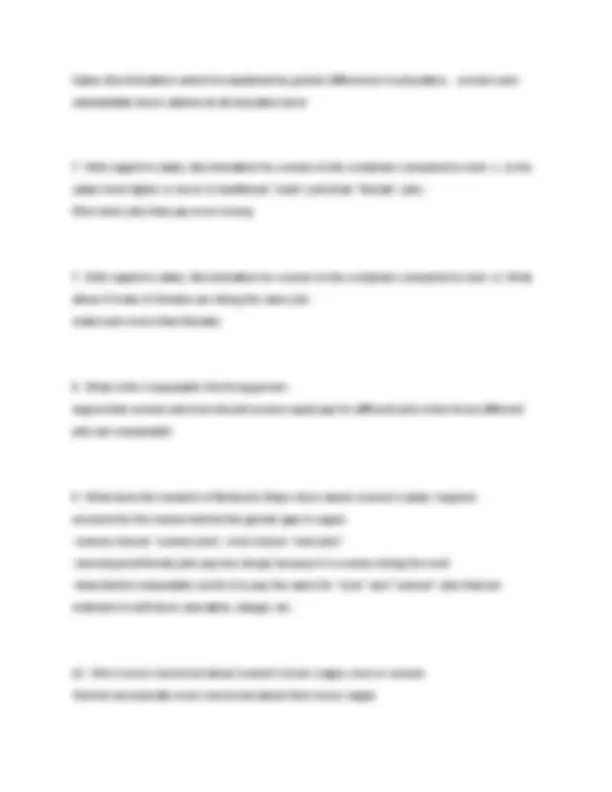
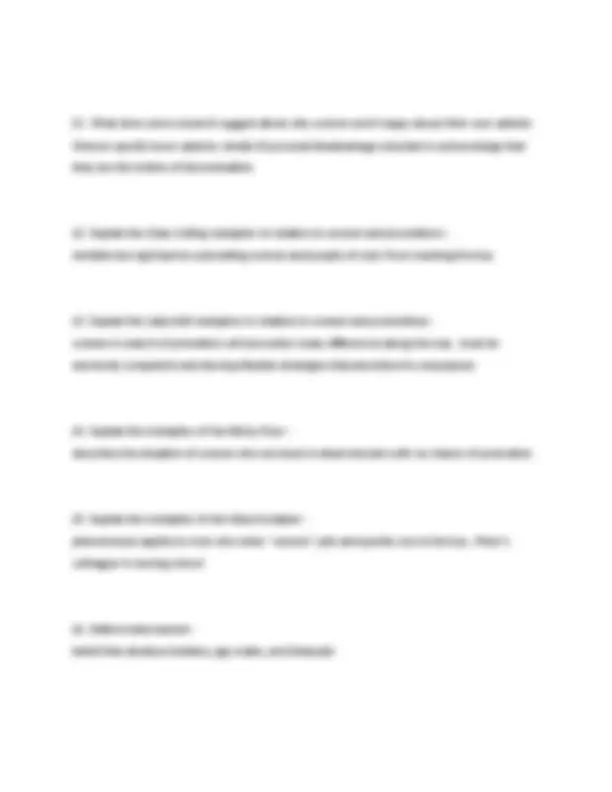
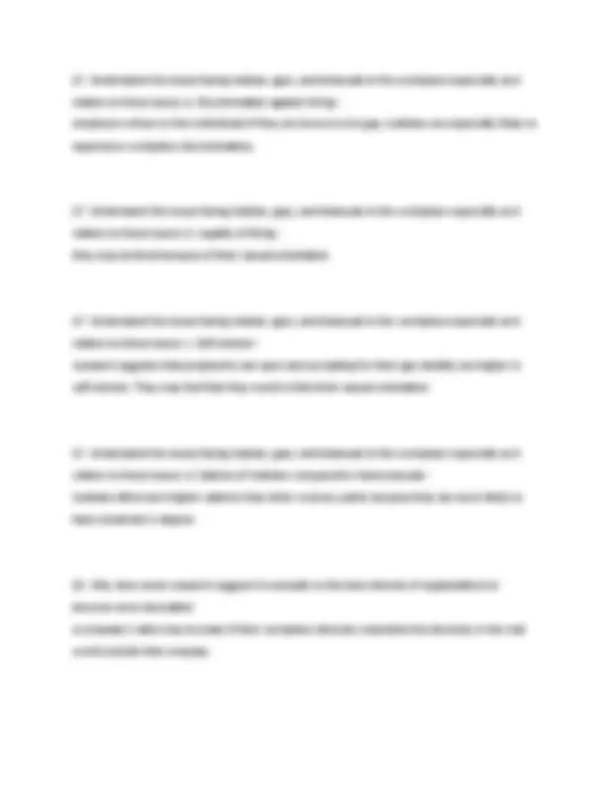
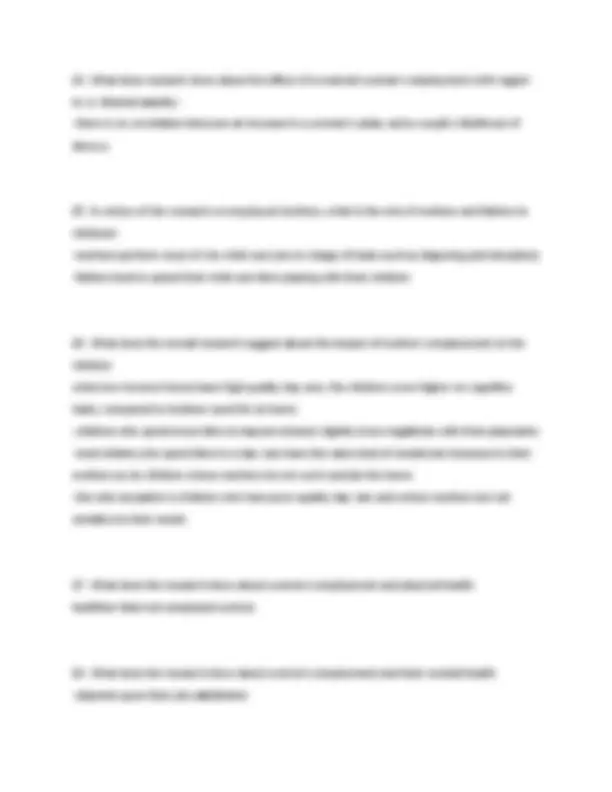
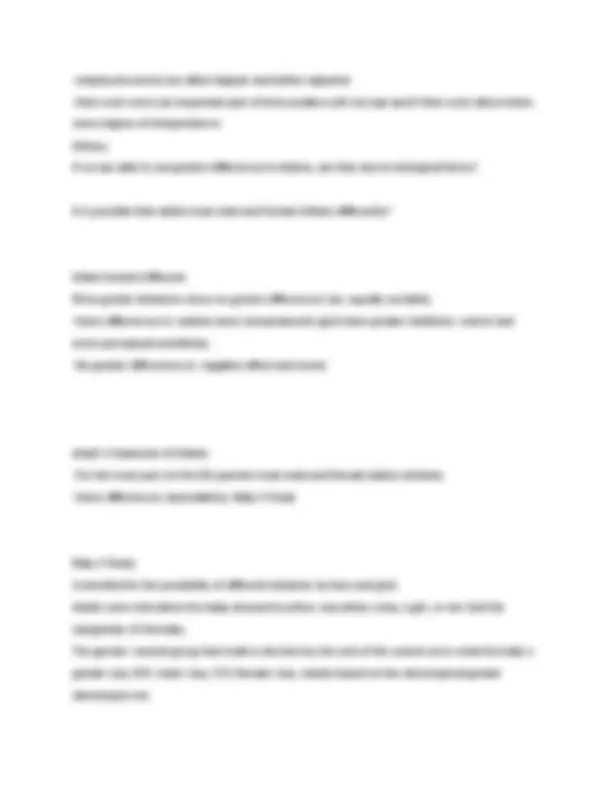

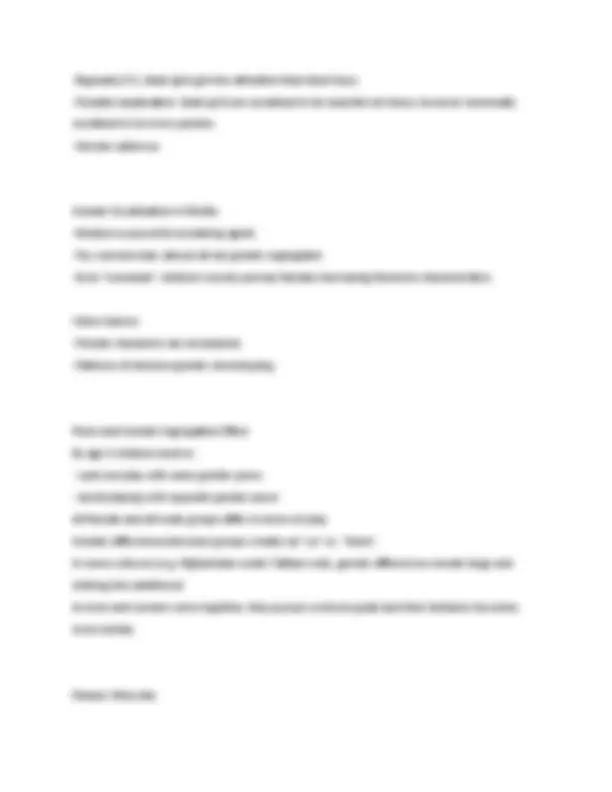
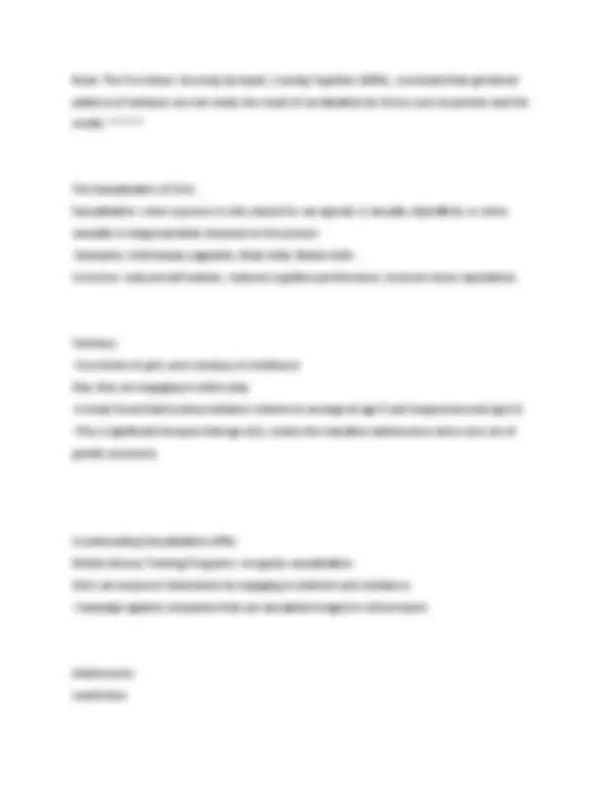
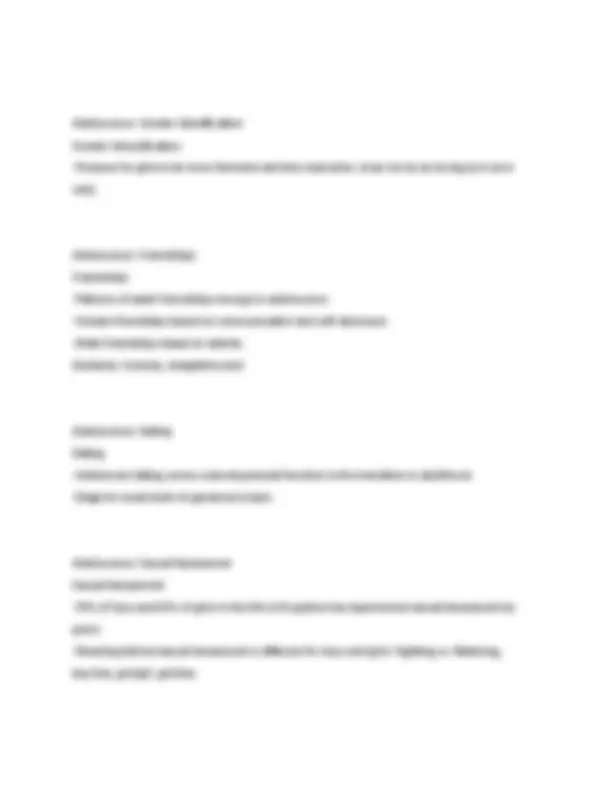
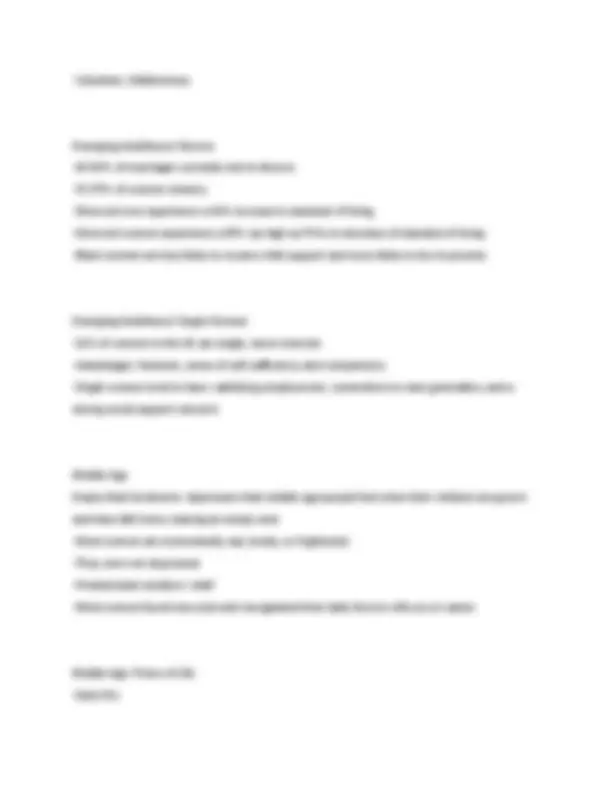
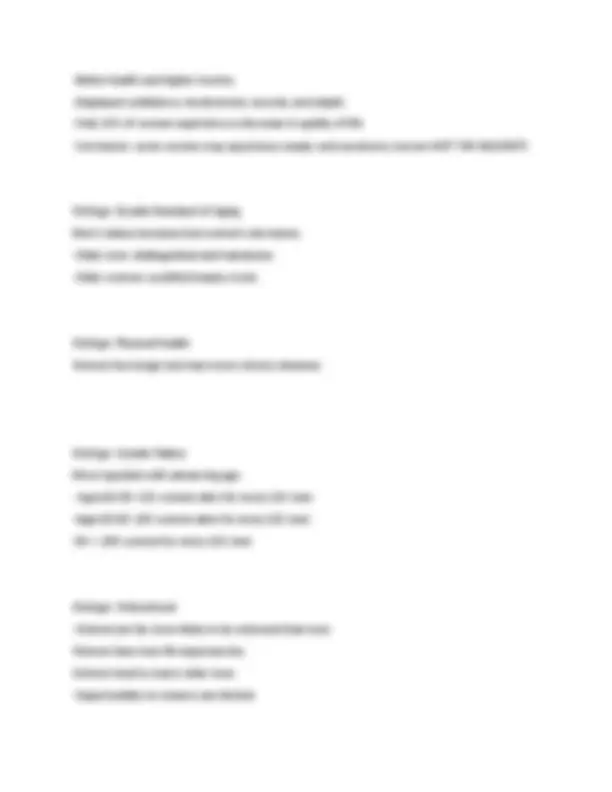



Study with the several resources on Docsity

Earn points by helping other students or get them with a premium plan


Prepare for your exams
Study with the several resources on Docsity

Earn points to download
Earn points by helping other students or get them with a premium plan
Community
Ask the community for help and clear up your study doubts
Discover the best universities in your country according to Docsity users
Free resources
Download our free guides on studying techniques, anxiety management strategies, and thesis advice from Docsity tutors
The Psychology of Women 7th Edition Test bank 1. What is the best predictor of women's employment educational background 2. Understand what the Temporary Assistance For Needy Families (TANF) program is all about. Why does your test say TNF has had tragic consequences for many women -aid to families with dependent children -provides welfare payments for children whose parents could not supply economic support -lifetime maximum of 5 years Negatives: -women are discouraged from pursuing higher education -children have more cognitive and behavioral problems 3. Define Access Discrimination - refers to discrimination used in hiring
Typology: Exams
1 / 20

This page cannot be seen from the preview
Don't miss anything!













men may treat women in a patronizing fashion, competence, confidence, and assertiveness may cause you to receive negative reactions from coworkers
When women are in high prestigious professions, what does research suggest about the climate women may find: d. Attitudes from male colleagues - receive messages that they are not really equal to their male colleagues, sexist attitudes, treatment discrimination
When women are in high prestigious professions, what does research suggest about the climate women may find: e. Nominations for awards - seldom nominated for prestigious awards
In heterosexual households where both partners are employed outside of the home, what is the division of household tasks men: household repairs and paying bills (30% to 40% of all household chores) women: cooking, cleaning, laundry, shopping, dishwashing
What does research show about the effect of a married woman's employment with regard to: a. Marital satisfaction -
Gender Learning
Childhood: Gender Differences Toy and game preference (~ age 2-3)
Book- The Two Sexes: Growing Up Apart, Coming Together (1998), concluded that gendered patterns of behavior are not solely the result of socialization by forces such as parents and the media. ^^^^^^ The Sexualization of Girls Sexualization: when a person is only valued for sex appeal, is sexually objectified, or when sexuality is inappropriately imposed on the person.
Adolescence: Weight & Body Image Weight and Body Image